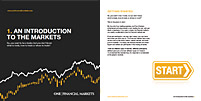

Oil prices rise as Israel-Hamas war rages on; Econ data takes focus
Investing.com-- Oil prices rose on Tuesday, recovering a measure of steep losses as traders continued to seek new developments in the Israel-Hamas war, while a swathe of upcoming readings on business activity also came into focus.
Crude prices tumbled around 3% on Monday as a series of diplomatic missions to Israel and Gaza pushed up hopes over a deescalation in the conflict. This was also accompanied by Hamas agreeing to free some hostages.
The moves saw traders scale back bets that the conflict will spill over into the broader Middle East region, potentially disrupting oil supplies.
But fighting between Israel and Hamas, particularly missile attacks from both sides, continued this week, while focus was also on a looming ground assault by Israel on the Gaza strip.
Brent oil futures rose 0.5% to $90.21 a barrel, while West Texas Intermediate crude futures rose 0.4% to $85.86 a barrel by 21:12 ET (01:12 GMT).
Oil prices had logged two strong, albeit volatile weeks of gains following the onset of the Israel-Hamas war. But they retreated sharply this week amid some profit taking and the absence of any major escalation in the conflict.
Focus this week is now on key business activity readings from the U.S. and other major economies, as well as a European Central Bank meeting for more cues on the global economy and future oil demand.
PMIs in focus as Fed meeting looms
Purchasing managers’ index (PMI) readings from Australia and Japan showed on Tuesday that business activity in the two economies remained weak through October.
Markets are now awaiting flash PMI data from the U.S., due later in the day, to gauge the state of business activity in the world’s largest fuel consumer.
Both manufacturing and services PMIs are expected to have contracted in October, as high interest rates and sticky inflation weighed on local businesses. Readings from the euro zone and the UK are also expected to show a similar trend, potentially heralding weaker economic activity and softer fuel demand in the coming months.
The readings come just before a Federal Reserve meeting next week, where the central bank is widely expected to keep interest rates on hold. But it is also expected to signal that rates will remain higher for longer.
Higher interest rates were a key source of anxiety for oil markets over the past year, as traders feared that economic activity will cool in such an environment, hurting oil demand.
Still, this notion was somewhat offset by signs of substantially tighter oil supplies this year, following deep supply cuts by Saudi Arabia and Russia. U.S. inventories have also consistently shrank this year, while the Biden administration recently outlined plans to begin refilling the Strategic Petroleum Reserve.
Begin trading today! Create an account by completing our form
Privacy Notice
At One Financial Markets we are committed to safeguarding your privacy.
Please see our Privacy Policy for details about what information is collected from you and why it is collected. We do not sell your information or use it other than as described in the Policy.
Please note that it is in our legitimate business interest to send you certain marketing emails from time to time. However, if you would prefer not to receive these you can opt-out by ticking the box below.
Alternatively, you can use the unsubscribe link at the bottom of the Demo account confirmation email or any subsequent emails we send.
By completing the form and downloading the platform you agree with the use of your personal information as detailed in the Policy.






